There are but a handful of places where the Rift Valley evokes its geologically violent origins with graphic immediacy. Ethiopia’s Danakil Desert is one such spot; the volcanic Virunga Range in the Albertine Rift is another. And so, too, is the most northerly landmark in the Tanzanian Rift Valley, the low-lying Lake Natron, a shallow sliver of exceptionally alkaline water that extends southward from the Kenyan border near Mount Shompole for 58km. For more information, see our Tanzania Safari Guide.
The Natron skyline is dominated by the textbook volcanic silhouette of Ol Doinyo Lengai, which rises more than 2km above the surrounding Rift Valley floor to an altitude of 2,960m, its harsh black contours softened by an icing of white ash that glistens brightly below the sun, as if in parody of Kilimanjaro’s snows.
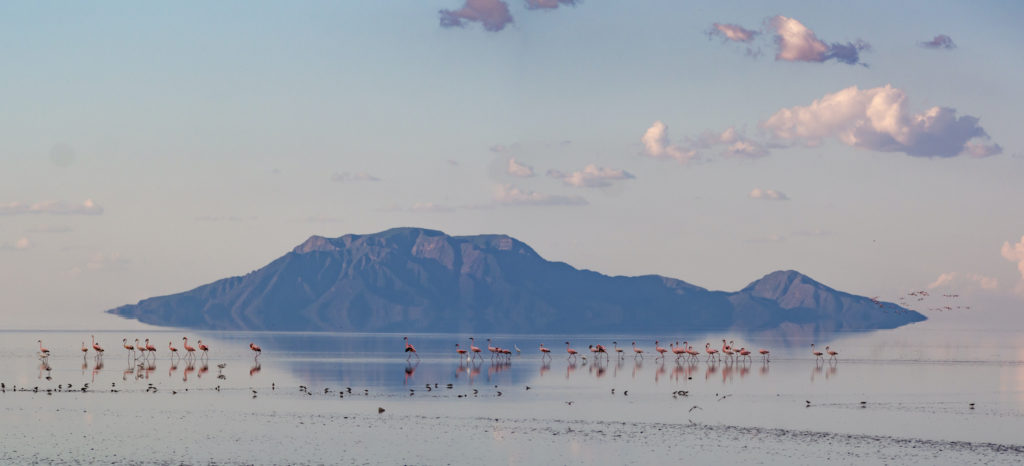
Then there is the lake itself, a thrillingly primordial phenomenon whose caustic waters are enclosed by a crust of sodden grey volcanic ash and desiccated salt, punctuated by isolated patches of steamy, reed-lined swamp where the hot springs that sustain the lake bubble to the surface.
Facts and figures
Thought to be about 1.5 million years old, Natron is a product of the same tectonic activity that formed the Ngorongoro Highlands and Mount Gelai, the latter being a 2,941m-high extinct volcano that rises from the eastern lakeshore. Nowhere more than 50cm deep, it has changed shape significantly since that time, largely as a result of volcanic activity associated with the creation of Ol Doinyo Lengai to its immediate south.
The alkaline level has also increased drastically over the millennia, partially because of the high salinity of ash and lava deposits from Lengai, partially because the lake’s only known outlet is evaporation. Today, depending on recent rainfall, the viscous water has an average pH of 9–11, making it almost as caustic as ammonia when the level is very low, and it can reach a temperature of up to 60°C in extreme circumstances.
Lake Natron’s wildlife
Natron’s hyper-salinity makes it incapable of sustaining any but the most specialised life forms. The only resident vertebrates are a few species of small fish, notably the endemic white-lipped tilapia that congregate near hot-spring inlets where the water temperature is around 36–40°C.
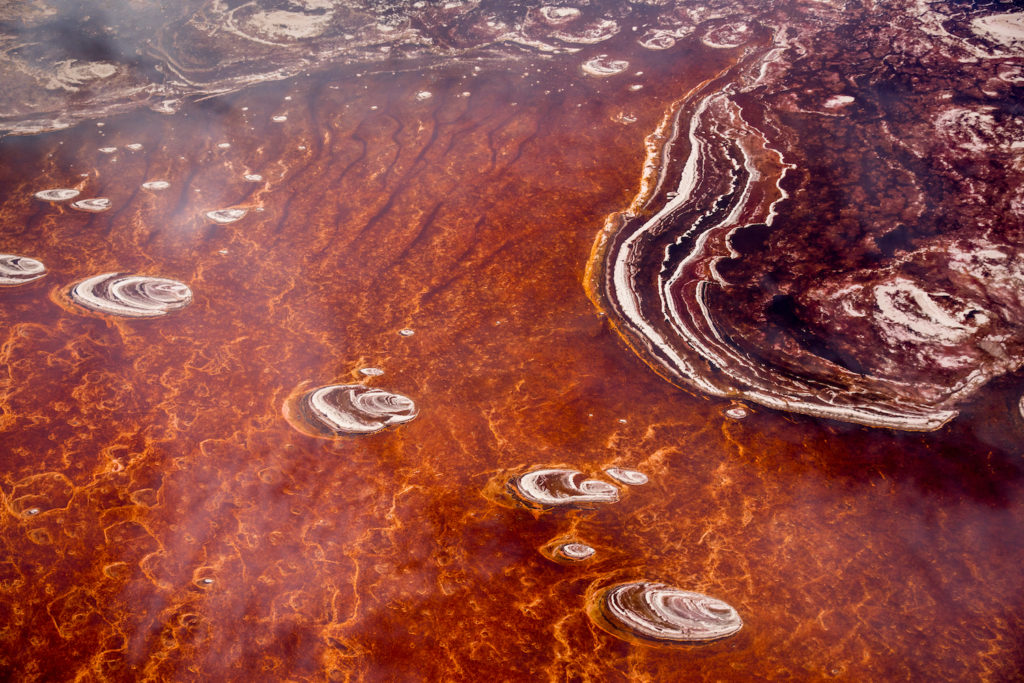
The microbiology of the lake is dominated by salt-loving organisms such as spirulina, a form of blue-green algae whose red pigments make the salt-encrusted flats in the centre of the lake look bright red when seen from the air.
Natron is also the only known breeding ground for East Africa’s 2.5 million lesser flamingos, which usually congregate there between August and October, feeding on the abundant algae (whose pigments are responsible for the birds’ trademark pink hue).
The breeding ground’s inhospitality to potential predators makes it an ideal flamingo nursery, but it also makes it difficult for human visitors to access – situated in the centre of the lake, it was discovered as recently as the 1950s and it can only be seen from the air today.
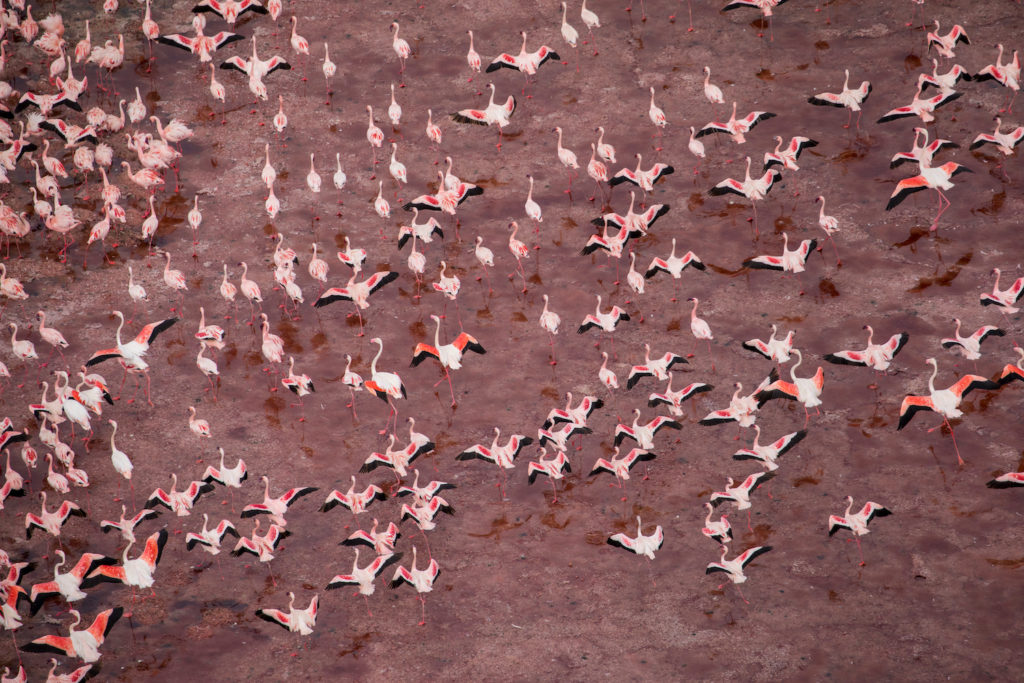
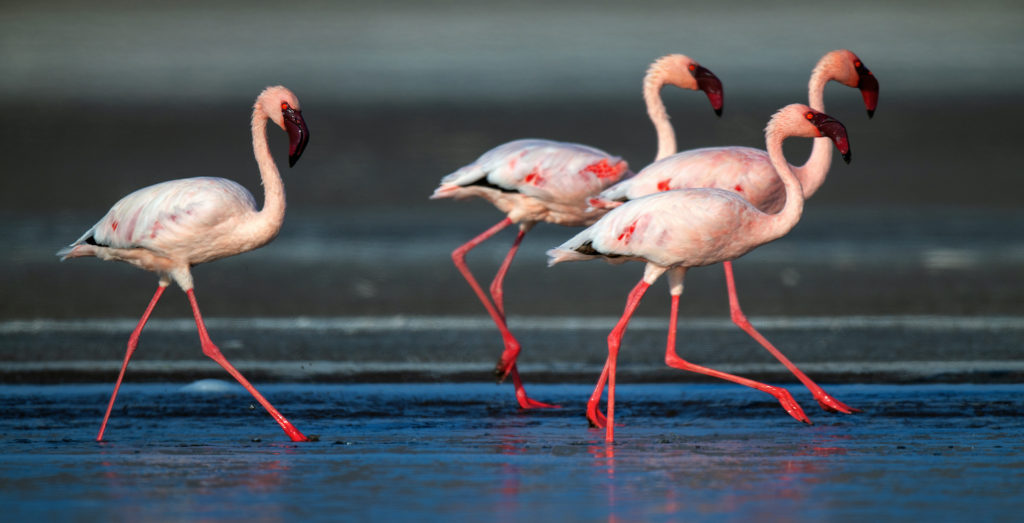
The area around Lake Natron supports a thin population of large mammals typical of the Rift Valley. Zebra and giraffe are quite common in the vicinity of Engaresero, and other wildlife includes wildebeest, zebra, fringe-eared oryx, Grant’s and Thomson’s gazelle, and even the odd lion and cheetah.
What to see and do around Lake Natron
The activities described below can be arranged indirectly through the various camps and campsites in the area, or directly through the Engaresero Eramatac Community Development Initiative, which maintains an out-of-town office alongside the main road to Mto wa Mbu.
Southern lakeshore
To reach the southern lakeshore from Engaresero, you need to drive for around 5km to an unofficial parking spot about 1km from the water’s edge, then walk for about 10 minutes across salt-encrusted flats to a series of pockmarked black volcanic protrusions that serve as vantage points over the water.
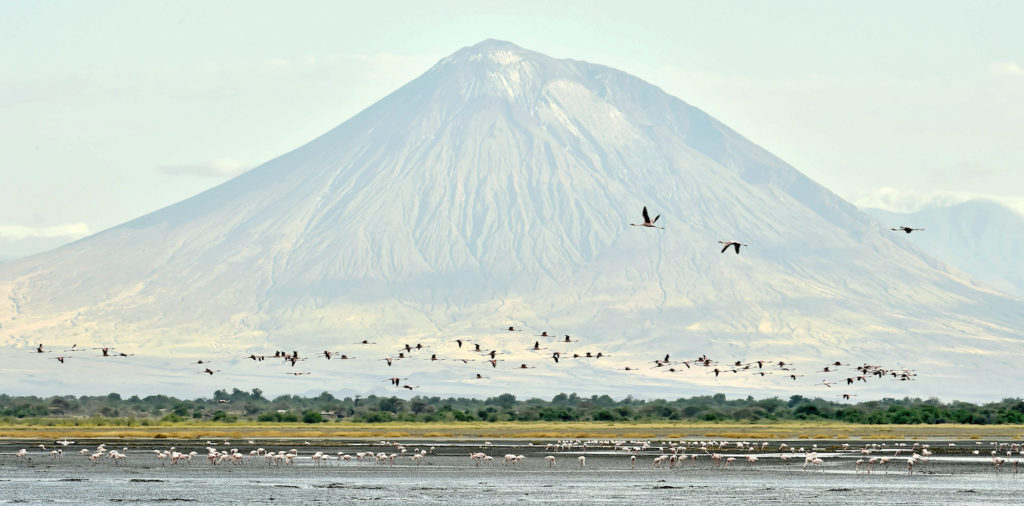
It’s a lovely spot with Lengai looming in the background, and it hosts a profusion of water birds, most visibly large flocks of the pink-tinged lesser flamingo but also various pelicans, egrets, herons and waders. Wildebeest and zebra are also often seen in the area.
Engaresero human footprints
One of the most important sites of its type in the world, this set of 58 human footprints is embedded in a layer of tuff-like compressed ash close to the southern shore of Natron. Although much older hominid fossil footprints have been discovered elsewhere in East Africa, these might well be the earliest-known ones associated with Homo sapiens.
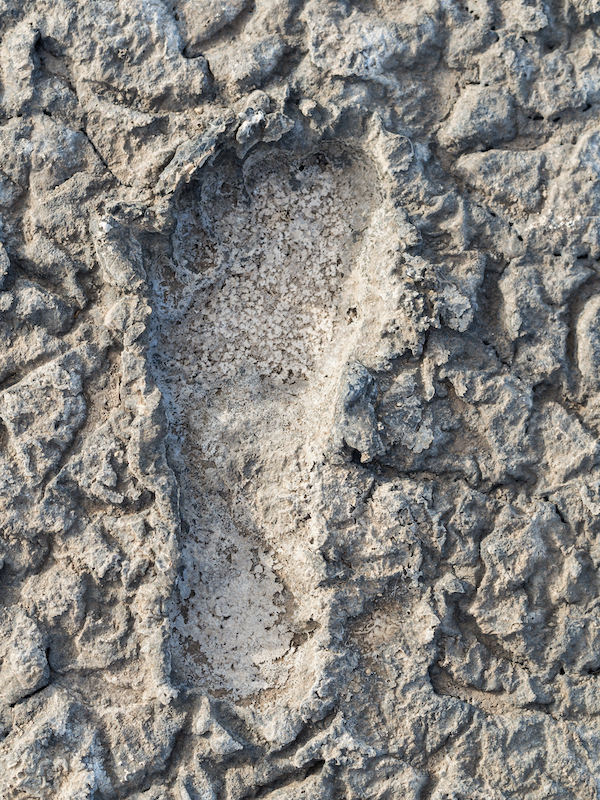
The prints were discovered by a Maasai herder in 1998 but only investigated properly by scientists about ten years later. It is thought that they were made by a party of 18 adults and children as they traipsed through a field of muddy ash when Lengai erupted around 120,000 years ago. The footprints are remarkably clear (although they can be obscured below a layer of fine dust) and their presence here only goes to underscore the prehistoric feel of this vast volcanic stretch of the Rift Valley.
Engaresero waterfall
The Engaresero River forms a series of pretty waterfalls as it descends from the Nguruman Escarpment west of Lake Natron, just south of the village of Engaresero. The lowest two falls can be reached by driving out to Waterfall Campsite, and then following the river upstream on foot through the gorge it has carved into the escarpment wall. If you are not already sufficiently doused by the time you reach the second waterfall, there’s a chilly natural swimming pool below it.
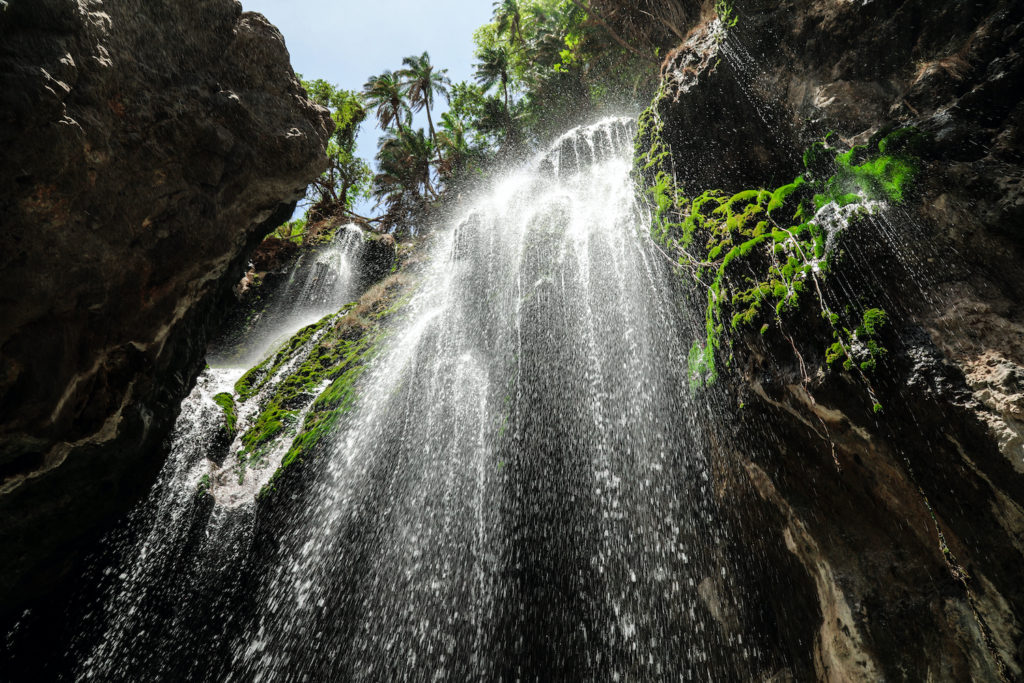
There is no clear footpath through the gorge: you will need to wade across the river several times (potentially dangerous after heavy rain) and can also expect to do a fair bit of clambering along ledges and rocks. This walk can only be recommended to reasonably fit and agile travellers, and it’s advisable to take somebody who knows the way to help you navigate a couple of tricky stretches.
Ol Doinyo Lengai
Estimated to be around 350,000–400,000 years old, Ol Doinyo Lengai – the Maasai ‘Mountain of God’ – is one of the youngest volcanoes in East Africa and possibly the most active. An interesting feature of Lengai is that it is the only active volcano known to emit carbonate lava, a form of molten rock that contains almost no silicon, is about 50% cooler than other forms of lava at around 500°C, and is also exceptionally fluid, with a viscosity comparable to water.
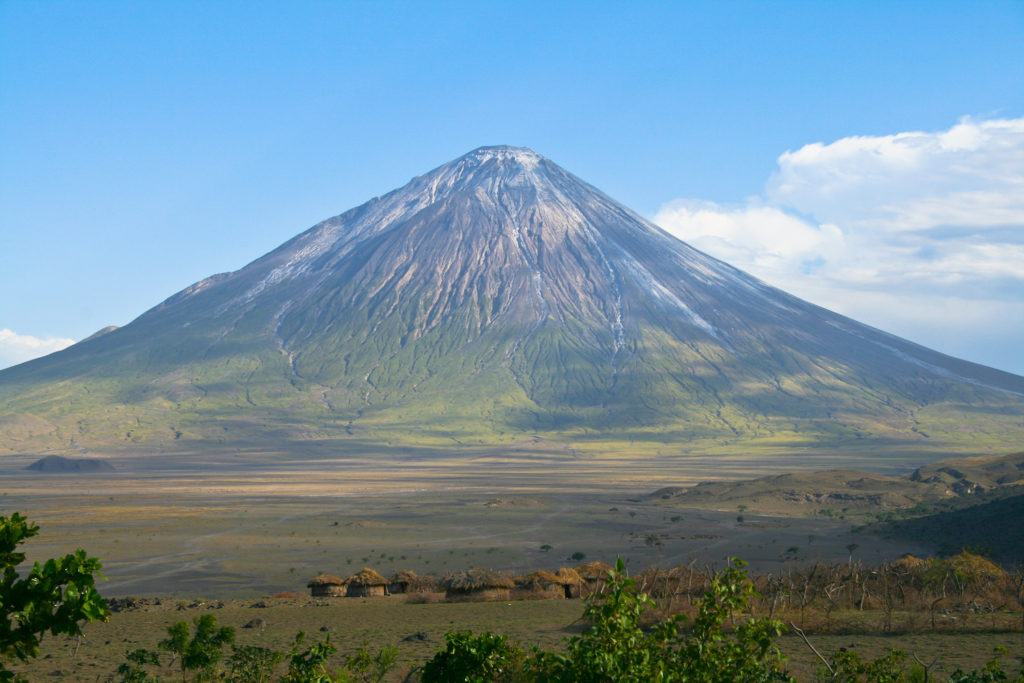
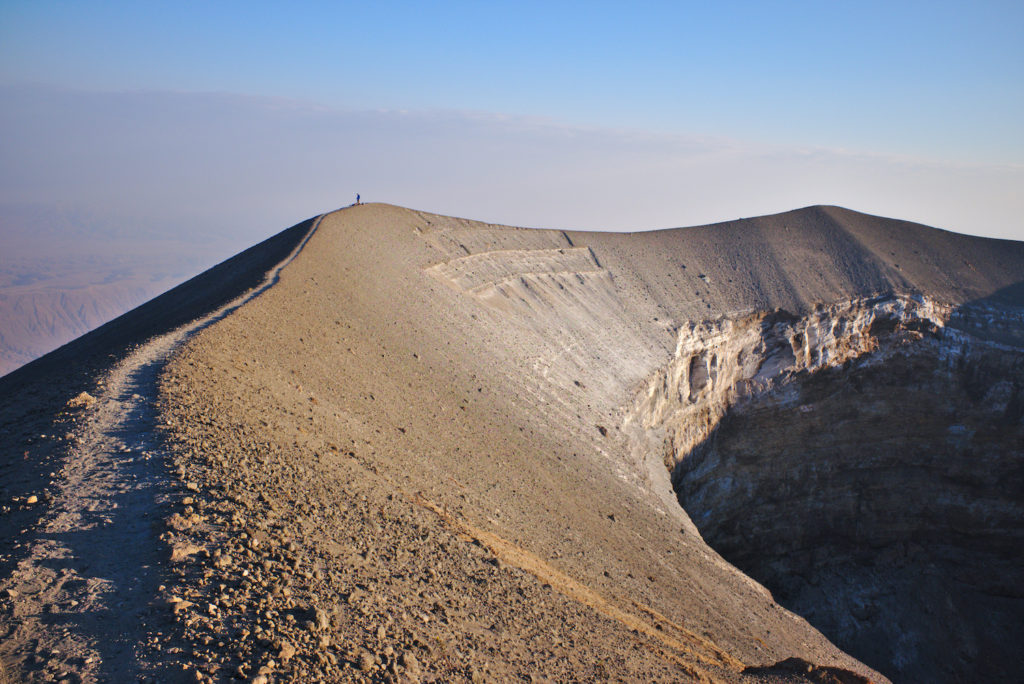
The ascent of Lengai is a popular hike with adventurous travellers, and it forms an excellent budget alternative to climbing Kilimanjaro, at least when the volcano is sufficiently placid. The ascent passes through some magnificently arid scenery and offers spectacular views back towards the Rift Valley, before leading to the bleakly visceral lunar landscape of the crater, studded with ash cones, lava pools, steam vents and other evidence of volcanic activity.
More information
Planning your Tanzanian itinerary and eager to include Lake Natron? Take a look at our Tanzania Safari Guide:
